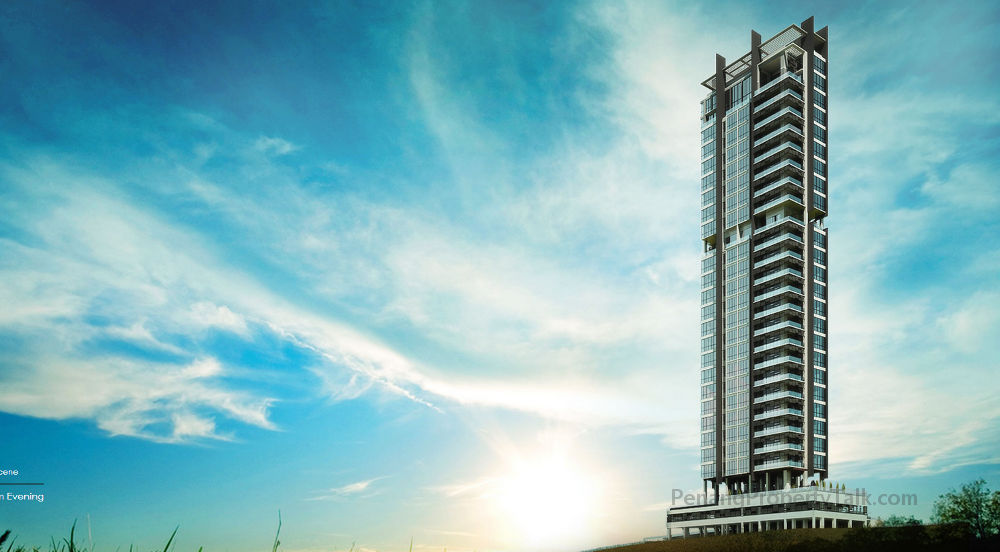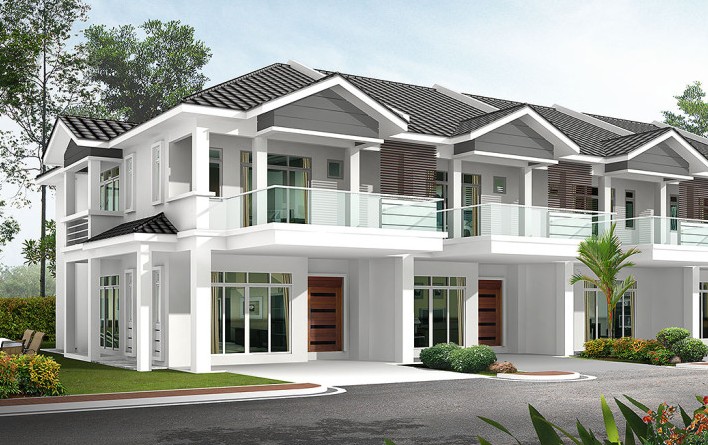
Mah Sing Group CEO Ng Chai Yong with the scale model of the Southbay City project in Batu Maung.
Mah Sing Group Bhd will develop RM3.4bil worth of residential projects in Penang and Kuala Lumpur over the next five years.
Group chief executive officer Ng Chai Yong told StarBiz two of the projects would be located in Penang, while another two would be in Kuala Lumpur.
In Penang, Mah Sing plans to develop The Coastal for the RM320mil Southbay City in Batu Maung and the RM750mil Ferringhi Residence Precinct 2 in Batu Ferringhi.
The projects, opened for registration now, will be launched in October and November respectively.
In Kuala Lumpur, the group will launch the RM1.5bil Lakeville Residence in Taman Wahyu, Jalan Ipoh, and the RM900mil D’sara Sentral in Sungai Buloh soon.
“The projects in Penang are competitively priced at around RM800 per sq ft and RM900 per sq ft respectively for The Coastal and Ferringhi Residence Precinct 2, as they are located near the sea, with accessibility to the main trunk road and expressway leading to George Town.
“The Coastal comprises 156 professional suites and 100 residential suites, with built-up areas ranging between 575 sq ft and 1,300 sq ft.
“The projects in Kuala Lumpur are attractively priced at around RM550 per sq ft for Lakeville and RM660 per sq ft for D’sara Sentral,” he said.
To add value to the Southbay City project, Mah Sing plans to develop a 750,000 sq ft shopping mall in 2016.
“The mall will take about three to four years to complete.
“We are currently constructing a 424,000 sq ft shopping podium trends@southbay city for Southbay Plaza, which is expected to be completed in 2016,” he said.
Despite the stringent bank loan conditions which had caused the property market to slow down in the country, Ng said the group’s sales had remained buoyant.
“We don’t expect the pricing of our projects to soften, as they are all located in prime and strategic locations like the Southbay project, which is a stone’s throw from the first and second links in Penang and the Tun Dr Lim Chong Eu Expressway, leading to town,” Ng said.
From Penang, the sales contribution for 2014 fiscal year is expected to increased to RM371mil compared to RM326mil last year.
“From Greater Kuala Lumpur, the sales contribution is projected to increase to RM2.217bil in 2014 from RM1.563bil in 2013.
“From Johor, the group is targeting to achieve RM831mil in sales this year, compared with RM959mil last year.
“We set a lower sales target for Johor this year as we have already launched most of the key projects in the state last year,” Ng said.
According to Ng, the Southbay project in Batu Maung has achieved sales of about RM811mil as at March 31.
“To date, the take-up rate is over 90%. The value of Southbay properties has risen by 100% in terms of capital appreciation since completion four years ago.
“A terraced unit at Residence@Southbay had risen from RM780,000 to RM1.45mil in the secondary market,” Ng said.
Mah Sing’s focus for this year is to ensure that its products stay affordable.
“Over 80% of our planned residential product launches will be priced below RM1mil,” he said.
The group’s main focus is still on the Klang Valley, where the projects are expected to contribute 60% to sales this year, followed by Johor Baru (23%), Penang (10%), and Kota Kinabalu (7%).
“The prospects of the property market in this country continue to be positive in the middle to long term as the population is projected to grow, especially in the Klang Valley, which is expected to increase from seven million now to 10 million in 2020.
“The key infrastructure projects such as the mass rail transit lines and the proposed high speed rail connecting Singapore to Kuala Lumpur will continue to spur interests in the Klang Valley,” Ng added.
In Johor Baru, Mah Sing plans to launch the RM5bil Bandar Meridin East project in the second quarter of 2015.
The projects for Bandar Meridin East will be previewed end of 2014.
“The design for the master plan will take advantage of the natural terrain of the site and incorporate several lifestyle communities comprising terraced, semi-detached and bungalow dwellings.
“Focus will be on creating a living lifestyle with particular emphasis on community participation, and security and sustainability in guarded and gated environments.
“To enhance safety further, traffic calming devices will be incorporated to control speeds and provide safe environments for cyclists and children,” he said.
Source: StarProperty.my



 RM5 for a bowl of curry noodles? In my day, it was 50 sen!” Sounds familiar? No doubt you hear your parents and grandparents griping about today’s prices more often than not.
RM5 for a bowl of curry noodles? In my day, it was 50 sen!” Sounds familiar? No doubt you hear your parents and grandparents griping about today’s prices more often than not.
